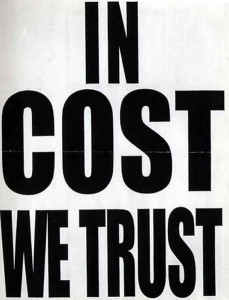 I’ll admit I don’t do many marina cost approaches. There are some very good reasons why. I’ve touched briefly on them in a prior blog. Let me tell them to you and if you don’t mind, shock you in the process. I’ll give you the first punchline early: every marina cost approach is hypothetical and deserves to be qualified as such in an appraisal report. If not, it’s misleading and a violation of USPAP! Not to be outdone, here’s the second punchline: a cost approach, if you subscribe to the far-flung idea that it actually reflects the market, gives you the value of the real estate but not the marina! Permit me to explain the method to my madness.
I’ll admit I don’t do many marina cost approaches. There are some very good reasons why. I’ve touched briefly on them in a prior blog. Let me tell them to you and if you don’t mind, shock you in the process. I’ll give you the first punchline early: every marina cost approach is hypothetical and deserves to be qualified as such in an appraisal report. If not, it’s misleading and a violation of USPAP! Not to be outdone, here’s the second punchline: a cost approach, if you subscribe to the far-flung idea that it actually reflects the market, gives you the value of the real estate but not the marina! Permit me to explain the method to my madness.
The cost approach consists of following steps:
- Estimate land value
- Estimate the replacement cost of the improvements
- Add entrepreneurial profit to the improvements
- Depreciate the improvements
- Estimate the replacement cost of the site improvements
- Depreciate the site improvements
- Add together the land value, depreciated building cost and depreciated site improvement cost.
I’ve found that when it comes to marinas, the cost approach is relegated to specialty situations that just stubbornly defy using a sales comparison or income approach. The classic situation where it applies are leasehold estates and partial interests.
Here’s a good example I ran into not many years ago. How do you value a municipality’s interest in a marina when the buildings are owned and operated by a marina concern, the docks are owned by the municipality and yet the land is leased from the State to the municipality? Strange just doesn’t seem to pay this situation homage, but it’s perfectly suited to the cost approach.
When you see a marina cost approach it’s almost always included for one reason and one reason only: the appraiser wasn’t able to do a sales comparison approach, so it’s used as a “check on value”. A check of the income approach, of course. Sometimes it’s done as a lending requirement where a lender requires more than one approach to value to keep the bank regulators happy. Maybe it was used to determine an assessment. As we are about to see, it’s about as reliable a check on value as the list price is in a store that says “50 percent off – everything must go”.
The fundamental problem is that the sum of the whole is not equal to the parts. Many of the parts are just plain bad. Worst of all, there’s no way a cost approach can put together the “business value” inherent in an operation that has payroll, payroll taxes, retirement accounts, equipment and a bunch of other incomes and expenses that represent an ongoing business entity. When appraisers say “the going concern market value” or “the market value of the marina as a going concern” or some other permutation, that means that including a cost approach is just bad business practice. Unless, of course, you’re created a way to estimate business value for a marina as I have; I’ll reveal my secrets in the upcoming Marina Investment book I’m completing soon.
In Part 2 we’ll explore the issues involved with properly estimating land value, the first part of the cost approach.

